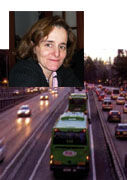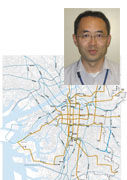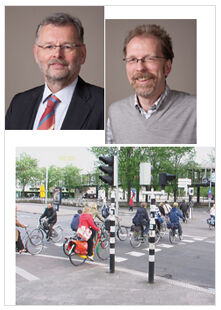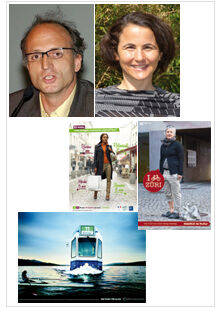Publications Routes/Roads policies
This page lists Routes/Roads articles of PIARC in the field of road policies. These publications are classified chronologically.
-
BeMobility: Integrated eCarsharing in Berlin

The "urban millennium" has commenced. The worldwide population residing in urban areas has surpassed the number of people living in rural areas. With many cities confronting rapid urban growth, local transportation systems increasingly suffer from congestion, a lack of accessibility and questionable overall sustainability. New mobility products need to be developed urgently to ease the current situation and mitigate future problems. On the other hand, cities already beyond the rapid growth phase [...]
-
The Madrid HOV-BUS System in the A-6 corridor

The HOV-BUS System in Madrid has already proven to be an original and rather efficient intervention to manage mobility in a metropolitan corridor with a relevant effect on the increase of bus users and with the increase of private vehicles occupation as well.
-
Promotion measures for use of public transport in Osaka City

Osaka is the core city of the second largest Keihanshin metropolitan area following Tokyo metropolitan area, with approximately 220 km 2 in size and a population of 2.6 million at night and 3.6 million during the day. It is highly concentrated with urban functions in a small urban area compared to other large cities worldwide. Thus, the City has great responsibility, having diverse people, firms, technologies, and information. To support them, it is critical to establish a transport system for [...]
-
Safe cycling in the Netherlands

Cycling is very popular in the Netherlands: with about 16.5 million inhabitants and circa 18 million bicycles. Almost all Dutch citizens own a bicycle and together they travel 15 billion kilometres a year, amounting to circa 1000 kilometres per inhabitant/cyclist. These trips are to and from schools (especially secondary schools and universities), work, shops and leisure trips. The length of the majority of trips is shorter than 7.5kilometres.Cycling is part of the'Dutch culture' and is of course [...]
-
Mobility management: a potential solution to urban traffic congestion

The systematic reliance on an increased supply of capacity in order to meet growing mobility needs has its limitations. Many European countries are already experiencing it on a daily basis, inasmuch as they have tied their urban and interurban development to a strategy of extracting greater output from road mobility. In light of the consequences associated with such a strategy, as reflected in traffic congestion problems, the field of mobility management provides counter-proposals for a more sustainable [...]